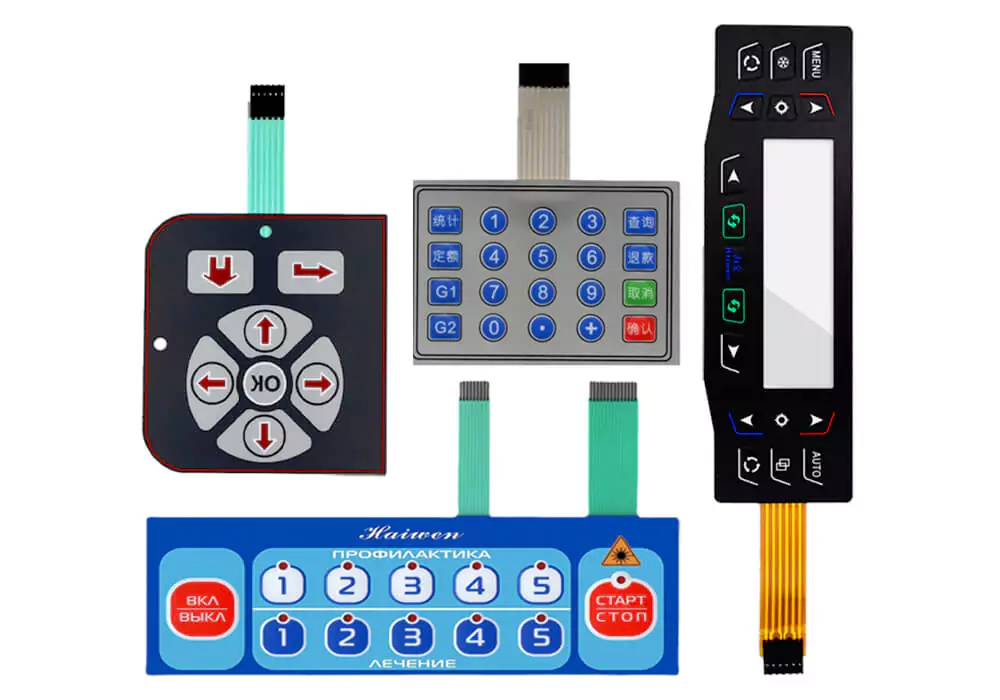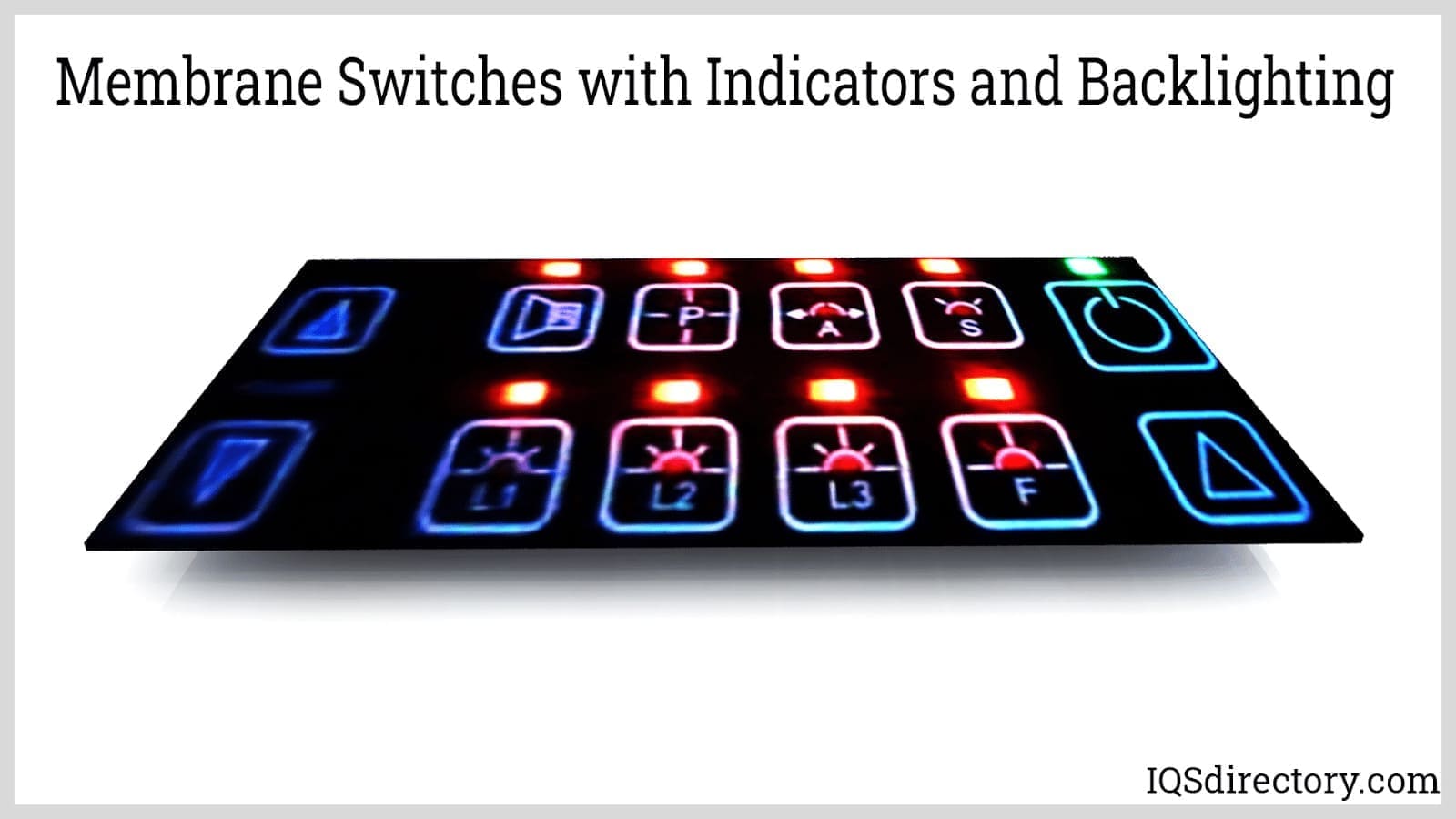The Production Refine Behind Membrane Switch Over: What You Need to Know
The production process behind membrane layer changes combines careful style, material option, and quality assurance. It begins with comprehending the complexities of membrane layer switch layout and advances via different stages, including product options and printing strategies. Each phase plays an essential function in guaranteeing capability and longevity. The intricacies of layer construction and the extensive screening standards may disclose understandings that are not promptly apparent. What lies past these fundamental elements?
Comprehending Membrane Layer Switch Over Design
Membrane switches may appear basic at initial glance, their design involves elaborate considerations that ensure performance and longevity. The design process begins with a complete understanding of customer needs, consisting of the user interface's desired application and ecological variables. Ergonomics is a crucial element, as the layout should help with ease of use while ensuring that tactile feedback meets customer expectations.Moreover, the layering of parts, such as visuals overlays, glue layers, and conductive traces, need to be exactly engineered. membrane switch. This layered configuration not only affects the button's responsiveness however also impacts its long life. Focus is given to the sealing techniques used to secure against moisture and dirt, which can compromise efficiency. In addition, style considerations reach visual appeals, where color pattern and visual clarity boost customer experience. Eventually, the design of membrane layer changes balances capability, individual experience, and resilience, ensuring that they fulfill the demands of various applications properly
Materials Made Use Of in Membrane Switch Production
When choosing products for membrane button manufacturing, it is necessary to ponder both performance and longevity. The primary materials consist of polyester and polycarbonate films, which supply flexibility and toughness. These movies are commonly coated with glue to guarantee appropriate bonding to substrates. Conductive inks, normally composed of silver or carbon, are vital for creating electric links within the switch, permitting reputable operation.Additionally, a safety layer, such as a hard coat, is regularly related to improve scrape resistance and longevity. The option of backing product, such as acrylic or foam, can considerably affect the button's tactile feeling and general customer experience. Different ecological elements, consisting of temperature level and humidity, ought to direct product choice to assure peak performance in details applications. Ultimately, the right combination of materials adds to the membrane layer button's capability and life expectancy, making notified selections essential for producers.
The Printing Process: Creating Graphics and Text
The printing process in membrane switch manufacturing plays a considerable duty in producing top quality graphics and message. Various graphic style methods are used to assure aesthetic allure and capability, while mindful ink option techniques are vital for longevity and efficiency. Recognizing these components is essential for accomplishing finest cause membrane button design.
Graphic Design Techniques
Graphic design strategies play a necessary function in the printing process of membrane layer buttons, as they define just how graphics and message will ultimately show up on the end product. Reliable graphic design entails the calculated use fonts, shades, and designs to boost readability and visual allure. Designers often use vector graphics for scalability, ensuring that pictures continue to be sharp at numerous sizes. Furthermore, attention to contrast and placement is important, as it affects user communication and aesthetic high quality. The incorporation of branding aspects, such as logo designs, should be managed with like preserve brand name honesty. In general, thoughtful graphic style methods add considerably to the capability and beauty of membrane layer buttons, impacting individual experience and item efficiency.
Ink Selection Techniques
Picking the ideal ink is necessary for achieving the preferred aesthetic top quality and resilience in membrane layer button manufacturing. Different ink kinds are made use of, consisting of solvent-based, water-based, and UV-curable inks. Each type provides unique attributes, such as adhesion, resistance, and versatility to environmental factors. Solvent-based inks are often preferred for their durability and dynamic colors, while water-based inks are much more ecologically pleasant but might have constraints in attachment. UV-curable inks give quick healing and durable efficiency. In addition, shade matching strategies ensure that the chosen inks line up with design specifications. Inevitably, the selection of ink have to consider factors such as application method, substratum compatibility, and end-use demands to accomplish exceptional results in membrane layer button graphics and text.
Layer Building and Assembly

Material Choice Refine
A mindful option of products is vital in the production procedure of membrane layer buttons, as it directly affects performance and longevity. The key products made use of consist of polyester, polycarbonate, and numerous conductive inks. Polyester is often favored for its outstanding resistance to chemicals and abrasion, making it ideal for harsh environments. Polycarbonate, on the other hand, provides superior quality and influence resistance, which is beneficial for applications calling for presence and effectiveness. Conductive inks, generally made up of silver or carbon, are vital for creating dependable electrical pathways. In addition, the choice of adhesive materials influences the total honesty of the switch - membrane switch. Assessing aspects such as ecological direct exposure, responsive responses, and aesthetic demands overviews producers in selecting the most effective products for their certain applications
Layer Attachment Techniques
Adhering layers in membrane button construction is a Your Domain Name crucial procedure that ensures functionality and long life. Different adhesion strategies are used to protect optimal bonding in between layers, which normally consist of using adhesives, heat, and pressure. Pressure-sensitive adhesives (PSAs) are typically used for their simplicity of application and instant bonding capabilities. Additionally, thermal bonding strategies can be applied, where warmth is used to trigger sticky residential or commercial properties, securing a solid bond. The choice of bond technique mostly depends on the products involved and the particular application demands of the membrane layer switch. Appropriate alignment and uniform application of adhesives are necessary to prevent defects, protecting the switch runs effectively throughout its desired life-span.
Top Quality Control Steps
Assuring quality assurance throughout the layer building and construction and setting up of membrane switches is crucial for maintaining efficiency and integrity. This procedure usually entails several essential procedures, including comprehensive assessments at each phase of production. Manufacturers utilize sophisticated screening methods, such as peel tests and attachment evaluations, to validate the honesty of layer bonds. In addition, visual assessments are performed to determine any type of issues in printing or product incongruities. Environmental conditions, such as temperature level and humidity, are thoroughly monitored to guarantee suitable curing and adhesion. Regular calibration of devices aids maintain exact production requirements. By carrying out these quality control procedures, suppliers can substantially lower the danger of product failure, assuring that the final membrane layer changes fulfill the required requirements and consumer expectations.
Checking and Quality Assurance Actions

Technologies in Membrane Layer Change Technology
As innovations in innovation remain to develop, membrane layer switches are benefiting from cutting-edge advancements that enhance their capability and individual experience. One notable technology is the combination of capacitive touch technology, which enables more receptive and intuitive individual interfaces. This change not only boosts appearances however additionally minimizes mechanical wear and tear, extending the life-span of the switches.Additionally, developments in visuals overlay materials have actually led to enhanced resilience and resistance to ecological factors such as wetness and UV light. These materials now supply boosted pop over to these guys clarity and illumination, more raising the aesthetic appeal.Furthermore, the incorporation of wise modern technology is transforming membrane switches over into interactive control panels, enabling connectivity with IoT gadgets. This connection cultivates a seamless individual experience, leading the way for applications in various markets, from medical care to consumer electronics. Collectively, these innovations setting membrane layer switches over as crucial read elements in contemporary tool layout.
Frequently Asked Questions
For how long Does the Membrane Layer Switch Over Manufacturing Refine Take?
The duration of the membrane button production process can differ substantially. Elements such as complexity, materials made use of, and manufacturing quantity influence timelines, with typical production ranging from a few days to several weeks for completion.
What Are the Common Applications for Membrane Switches?
Membrane layer switches are commonly utilized in various industries, including automotive controls, home appliances, medical devices, and customer electronic devices (membrane switch). Their adaptability and longevity make them suitable for applications requiring straightforward interfaces and dependable performance in varied settings
Can Membrane Layer Changes Be Personalized for Specific Requirements?

What Is the Life-span of a Normal Membrane Layer Change?
The life-span of a typical membrane layer button varies, however normally, it varies from 1 to 5 million cycles. Factors such as usage, atmosphere, and worldly top quality greatly influence sturdiness and general efficiency with time.

Are Membrane Switches Ecologically Friendly?
The ecological friendliness of membrane layer switches over differs. Some products utilized may not be recyclable, while others can be environmentally friendly. The overall impact depends on making techniques and products, necessitating mindful consideration throughout choice and disposal. The manufacturing procedure behind membrane layer changes combines careful design, product choice, and quality control. It starts with recognizing the ins and outs of membrane switch style and advances with different phases, consisting of material choices and printing strategies. When choosing materials for membrane layer switch production, it is crucial to consider both performance and longevity. A careful selection of products is necessary in the manufacturing procedure of membrane buttons, as it directly affects performance and resilience. The selection of bond approach mainly depends on the materials included and the specific application needs of the membrane button.